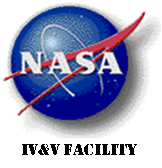Triakis completed its first NASA-sponsored research project entitled "The Use of a Virtual System Simulator and Executable Specifications to Enhance Software Validation, Verification, and Safety Assurance" in June 2004. This investigation showed:
- A new method of specifying, executing, and verifying an entire system design in a pure virtual environment.
- How uninstrumented embedded object software can be verified in the virtual system environment.
- How the same tests used to verify the system design may be used to verify the controlling software.
When the software passes the same tests used to verify the system design then it correctly implements the known and tested system requirements. As a result, we now have a viable means of discovering requirements-induced software faults prior to the integration test phase of a project.
To pursue our objectives, we created a simplified simulation of Shuttle Remote Manipulator System (Robotic Arm), or RMS, as a framework for implementing our ideas. This simulation comprises multiple interconnected executable specifications (ESs) of the various subsystem elements, bounded exactly like their real-world counterparts would be. We then developed a complete suite of verification tests from our requirements and debugged all ESs until the simulator passed all tests.
Next we created and simulated a PowerPC-based hardware design to implement the ES of the primary RMS control computer. We developed software to implement the behavior specified in the controller ES, compiled and loaded it into the simulated hardware, and replaced the controller ES with it. In this manner we were able to verify the software using the same suite of tests developed to verify the ES-based system design.
This research effort was funded by the NASA Office of Safety & Mission Assurance (OSMA) Software Assurance Research Program (SARP) and managed by the NASA IV&V Facility. Please download a copy of our research report for a detailed description of our project and a discussion of some of the implications of our results. The entire set of project documentation may be viewed and downloaded at: http://sarpresults.ivv.nasa.gov/ViewResearch/282/32.jsp.










